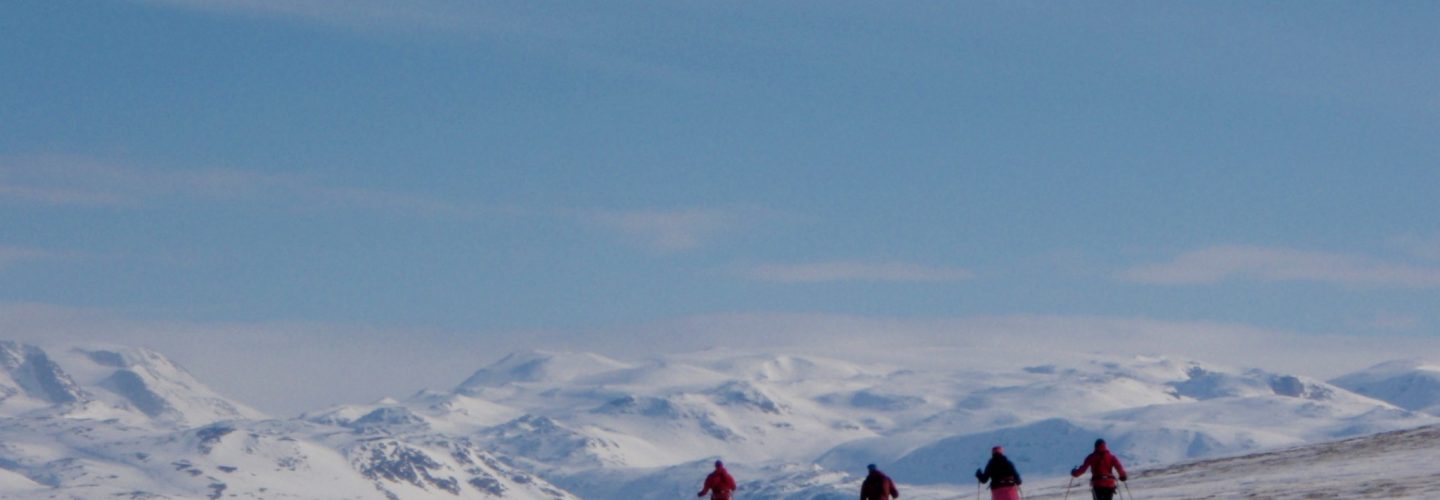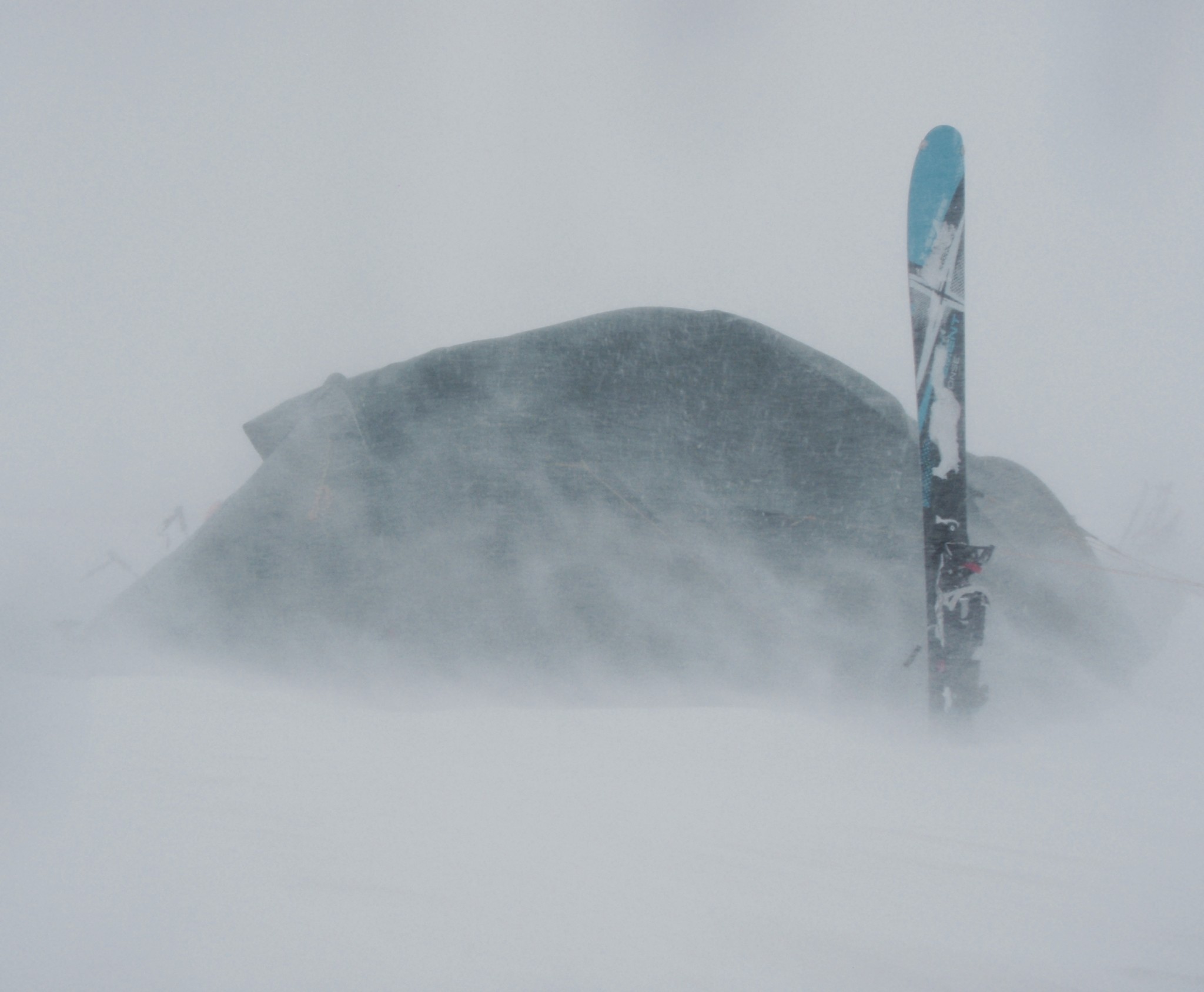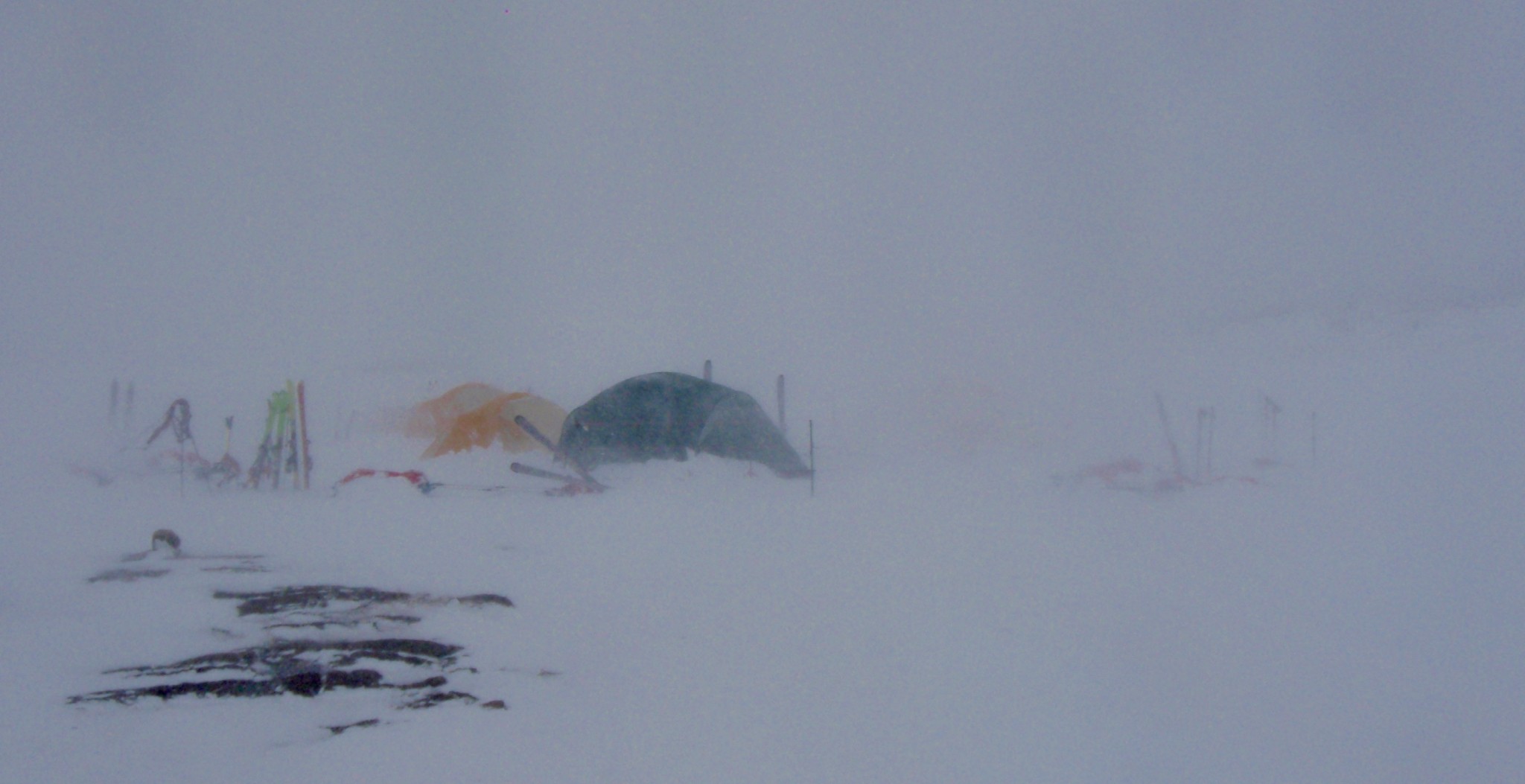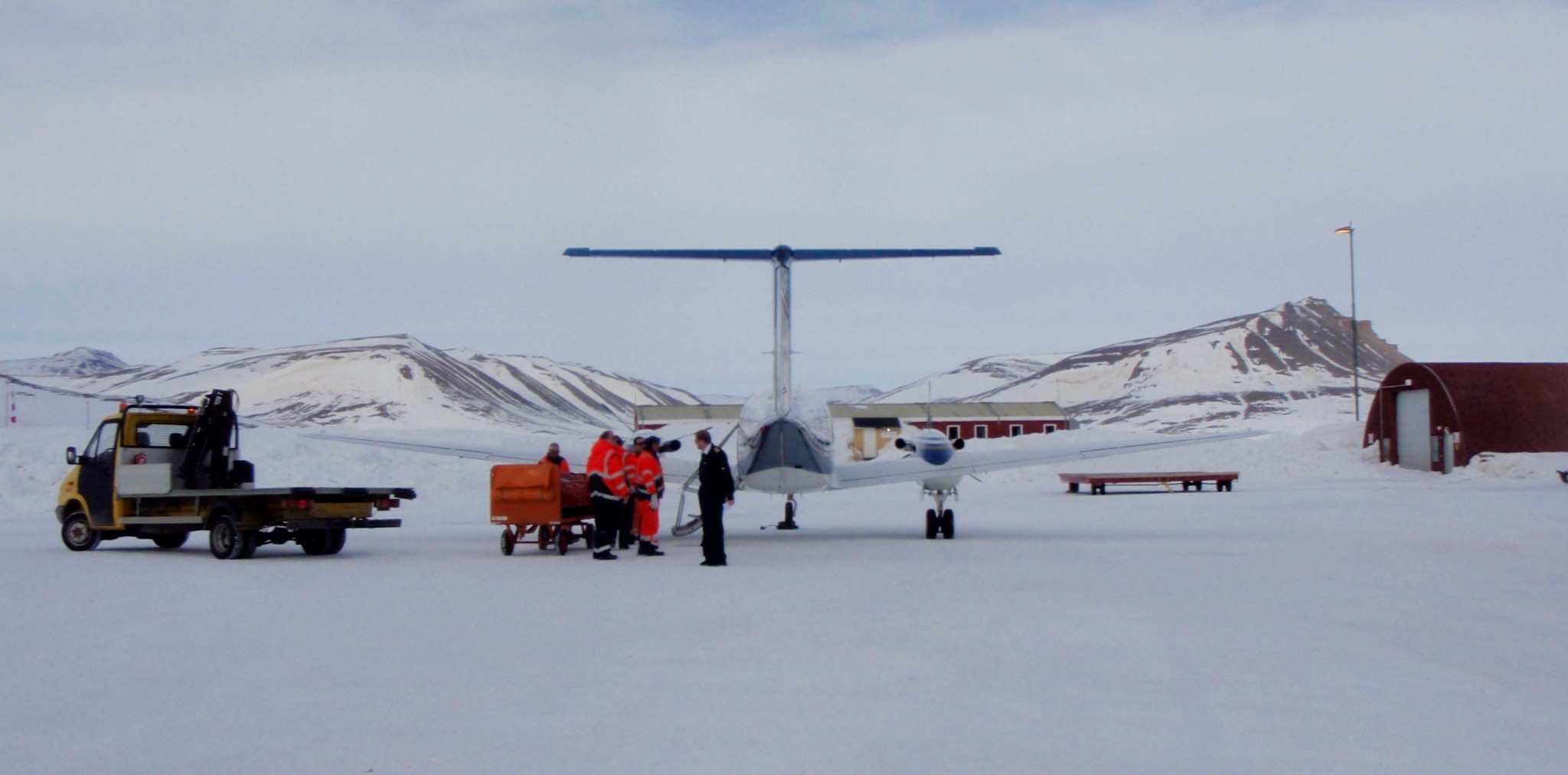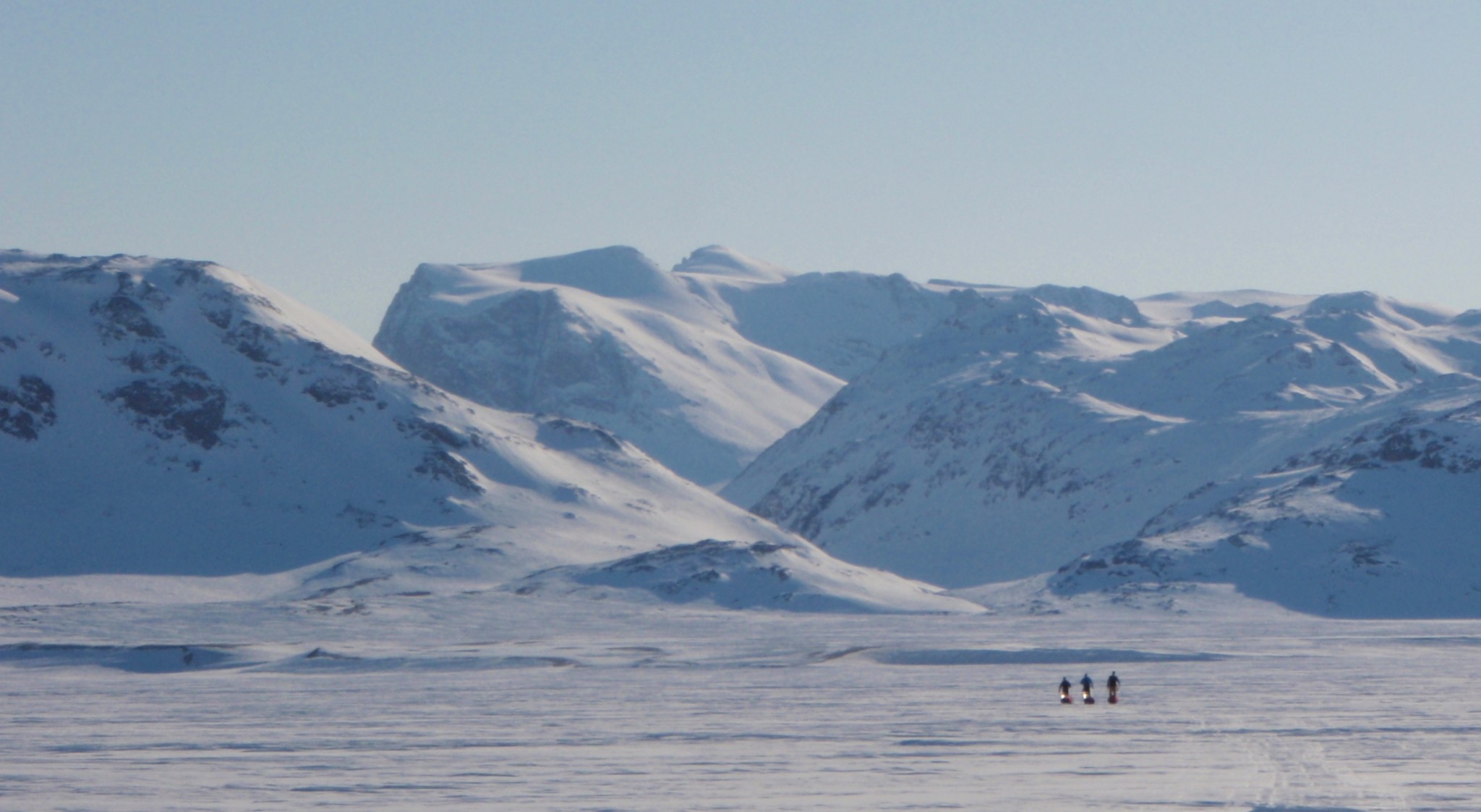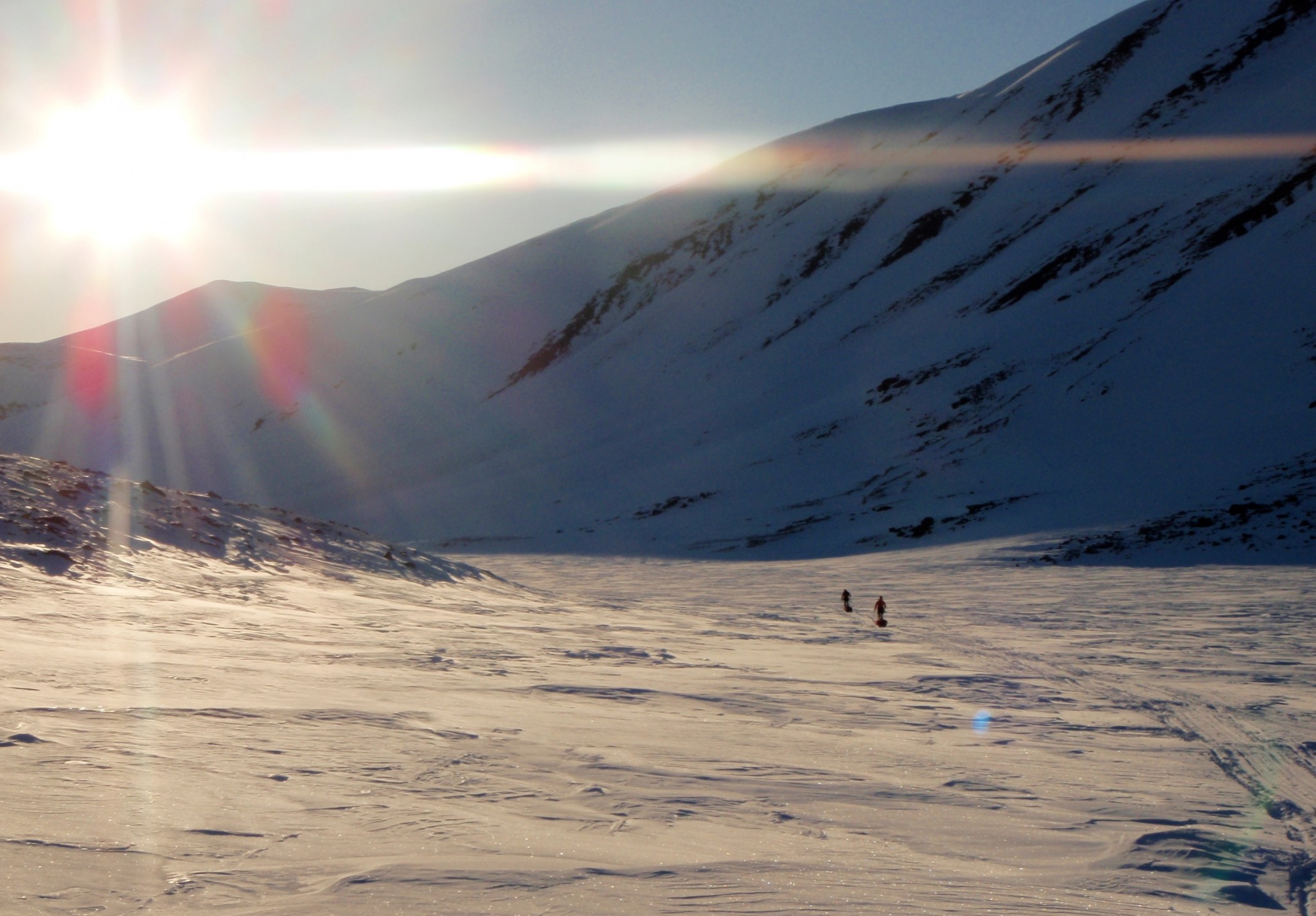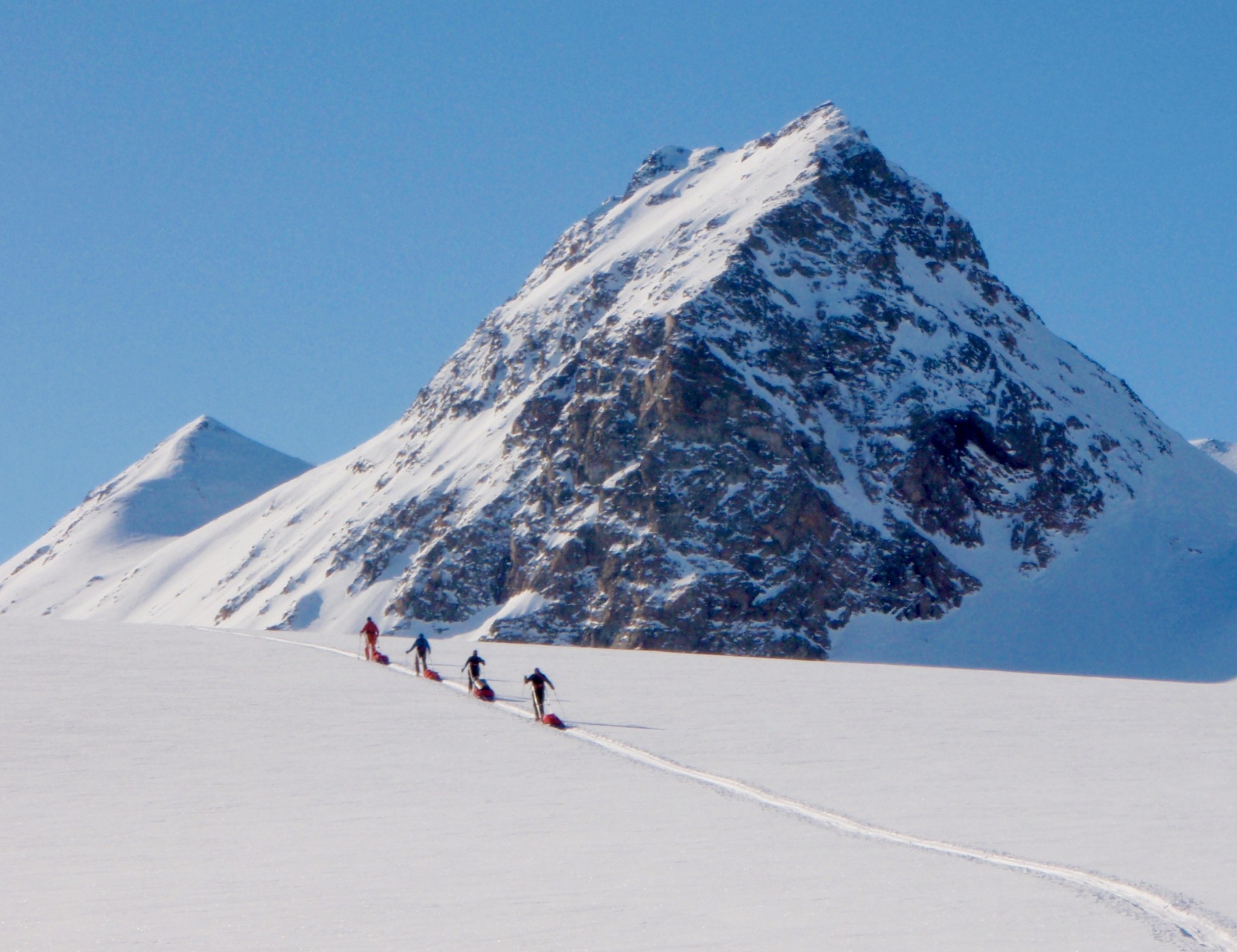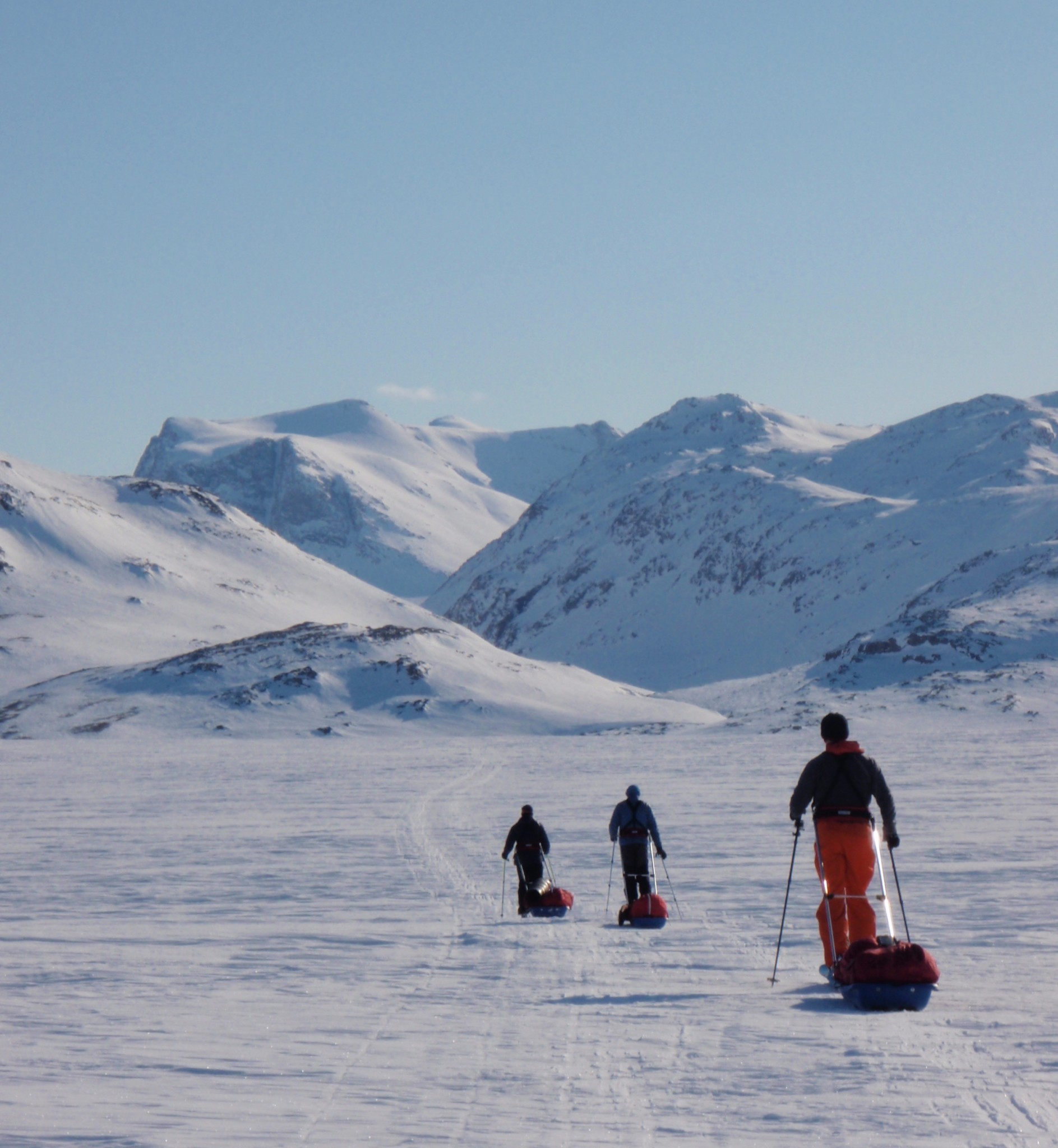Our tent inner bowed under the weight of the snow, and an incessant drip flowed from one of the toggles in the roof, dripping onto our bags, mats and tired legs. Wind whistled through the camp and around our tent, and found its way between the inner and fly, even after the tent had been dug down and storm proofed the night before.
Nige, Tino and Simon’s tent was less than 6 feet away, but at times it could not be seen through the spinning snow when peeking outside, just to double check the weather was as bad as it sounded. Having said this, the wind and snow probably provided more security from polar bears than the fence (constructed of two panic alarms and some paracord) that surrounded the camp. It was also reassuring to have a bag of flares and a rifle as a pillow.
We were camping at Fame Øer, the islands at the northern tip of Hurry Fjord in north eastern Greenland, one of many forming the Scoresbysund Fjord system, the largest in the world. Stage one of the Berghaus Iceman Polar, the ‘world’s toughest arctic ski race’, journeyed from the airport and Greenland base of Tangent Expeditions at Constable Point, through the Postkassen Valley and to the camp. The original plan had been to stay here for one night before starting stage two. Sadly, the weather had other ideas, as can often be the case in this part of the world.
The forecast brought high winds and fresh snow, and I ended up holed away in a tent with two strangers, having never met my teammates before this trip. The storm lasted two days, I read Hemingway’s ‘The Snows of Kilimanjaro’ from cover to cover at least twice, and we discussed topics ranging from medicine to space, children to learning French, and the many uses of cable ties after an unfortunate incident at the toilet trench involving some borrowed boots. Trips like this always attract a good range of people, and in the camp we had doctors, emergency personnel, guides, retired teachers and others, as well as mountain and expedition experience from the Alps, the Arctic, Antarctic and greater ranges. There were many good stories to be heard, and the time passed relatively quickly.
Just getting to Greenland had been an adventure in itself. A group of us drove from Reykjavik to Akureyri, buckling a tyre and spotting the Aurora Borealis on the way. Most of the group flew across in an unpressurised Twin Otter utility aircraft, loaded with kit as well as supplies of everyday essentials such as potatoes for the local settlement at Ittoqqortoormiit. This is one of the world’s last hunter societies and one of the remotest townships in Greenland. The rest of us took the much smaller but comparatively luxurious nine seat King Air. Less leg room than a budget flight, but with mahogany ash trays and a view over the pilot’s shoulder. We flew across frozen seas and never ending mountains to the snow packed runway at Constable Point, an old airport built by oil speculators and then sold to Greenland.
The fourth morning stirred quiet and calm, a world away from the previous 48 hours. The magnificent looking entrance to the Kalkdal Valley loomed at the far side of Hurry Fjord. Bordering the largest national park in the world, and home to polar bears and ice, the mountains may not be the biggest, but Greenland feels vast. We set off in good spirits, after a late race start of 9am to allow for digging out tents and blister management from day one. Jamie, Nat and Scott quickly pulled away from the rest of us, as they had on the first day. They disappeared from view at the steep entrance to the Kalkdal Valley, the only evidence of their presence from now on being their neat line of tracks through the twisting gorge. The first steep climb, and differing tactics on its approach, further fragmented the remaining teams. Beth, Ade and I ended up skiing on our own, looking over our shoulder to try and catch a glimpse of the teams behind. The impressive, steep sided, Kalkdal Valley had swallowed us whole, with a beautiful Mr Whippy peak halfway marking a sharp turn right and a gradual descent towards our second camp, at the base of an unnamed glacier.
We were near the sea ice, in the heart of polar bear country, and the cold glacial breeze combined with the sea air made for a very cold night, shattered but barely sleeping. The sun disappeared early from the valley, the final team of Paul, Lizzie and Debs arrived as the warmth of the sun dropped behind the looming peaks. Every team had at least one member suffering with blisters, and footcare was high on the evening’s agenda, alongside the now slick ritual of melting ridiculous amounts of snow for dinner, brews and the morning flask.
What was to now be the final day of competing, due to the earlier bad weather, travelled south up an unnamed glacier before hanging a right and heading seemingly ever upwards again, blind summit after blind summit over the Bjerring Pedersens Glacier. Ski skin issues early on were resolved with a roll of duck tape, finally hitting the sunshine late morning. As the day was spent wholly on glaciated terrain, we were roped up all day until the final few kilometres. This gave the skiing an even more rhythmical pattern than normal, and we stopped every now and then to look back at the distant icebergs frozen in the spring sea ice or the dizzying array of unclimbed peaks bordering the Bjerring Pedersens valley. The ten hour race window was reached just as we reached the top of the glacier and the second descent of the day lay before us. The winning team of Nat, Jamie and Scott had long finished, and the skidoo safety team sped past to collect and then ferry the competitors behind us to the finishing line. Although the race had now finished, and our final time plus penalties had been set, we took the opportunity to finish the course under our own steam. My aim for the race had never been to win, but was always to get around it without assistance, and with a new lease of life we set off towards the setting sun and the finishing flag. After a manic year of moving, studying, working, becoming a father, and not nearly enough skiing, climbing or something resembling training, I was filled with pride and warmth at what I had achieved.
Everybody had had different motivations and expectations, different skills and abilities, different background stories, but we had come together and made memories, shared moments and gained friends (and blisters) during this great race. Some were staying on for further ski trips, to guide or to work, but for me and some others a final night on the ice awaited, before an early flight back to Akureyri and the long drive to Reykjavik. All that was left now were two nights in Iceland with new friends and the world’s most expensive whisky bar.
Floating around soaking blisters and muscles in the Blue Lagoon, with a beer in hand and mud on our faces, nobody was looking back, but asking – “what’s next?”
“The Worlds Toughest Ski Race” will run again during April 2017.


